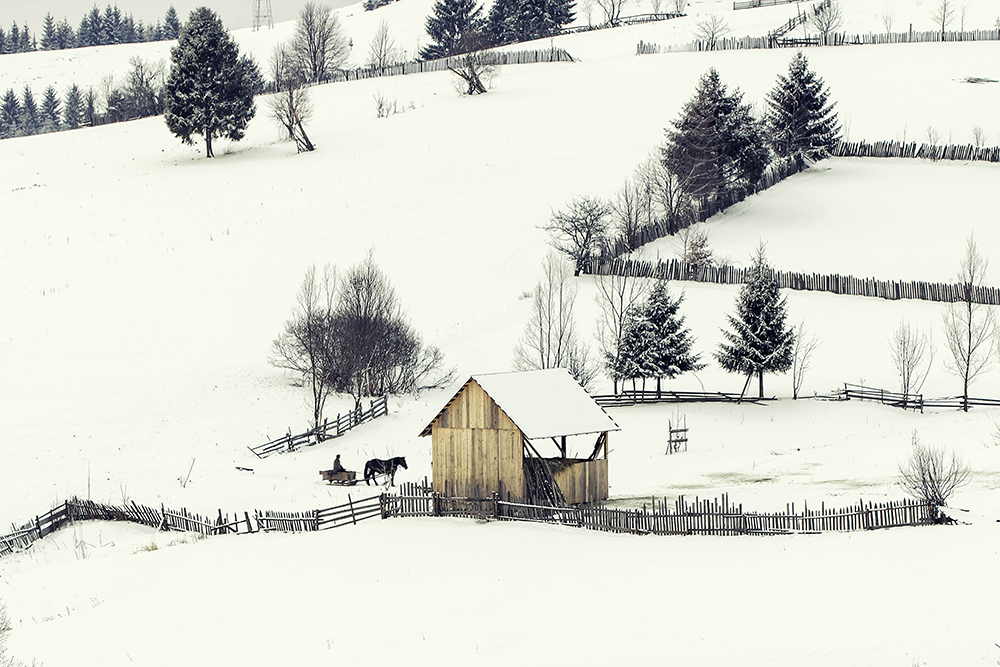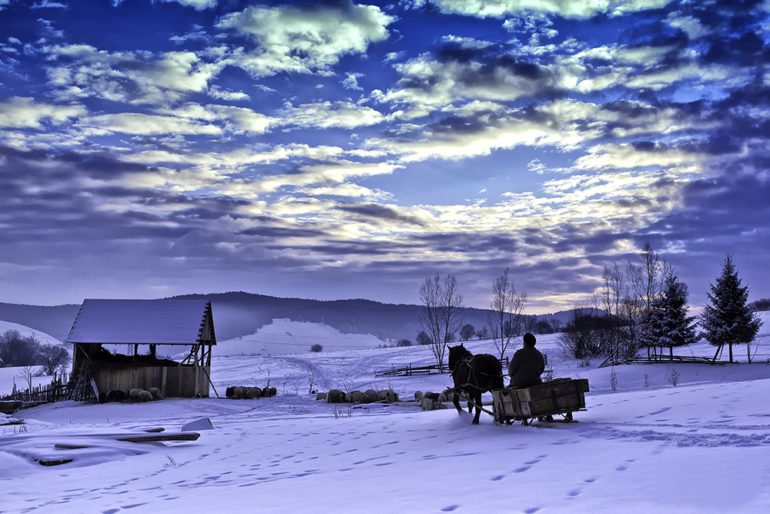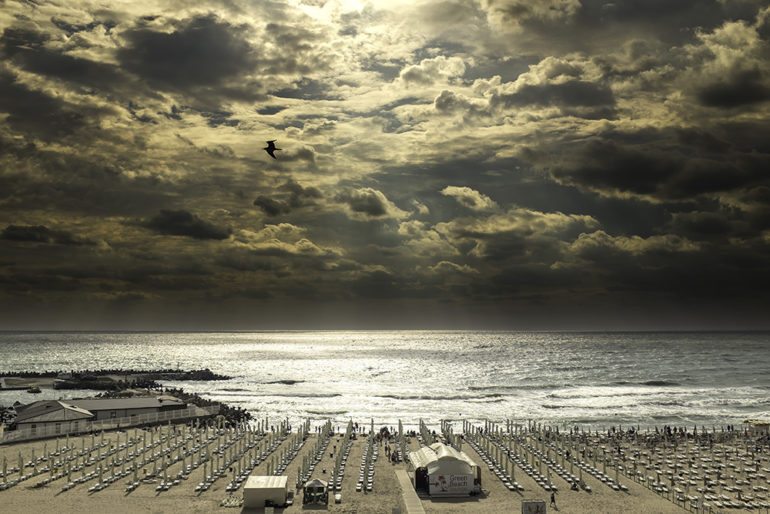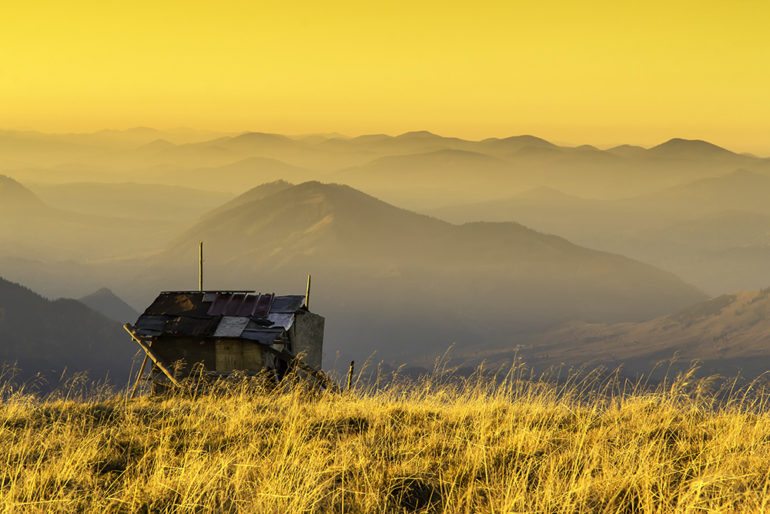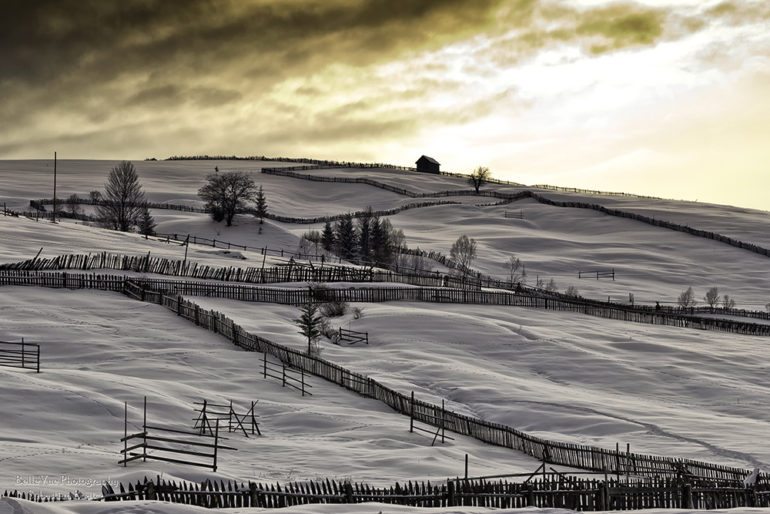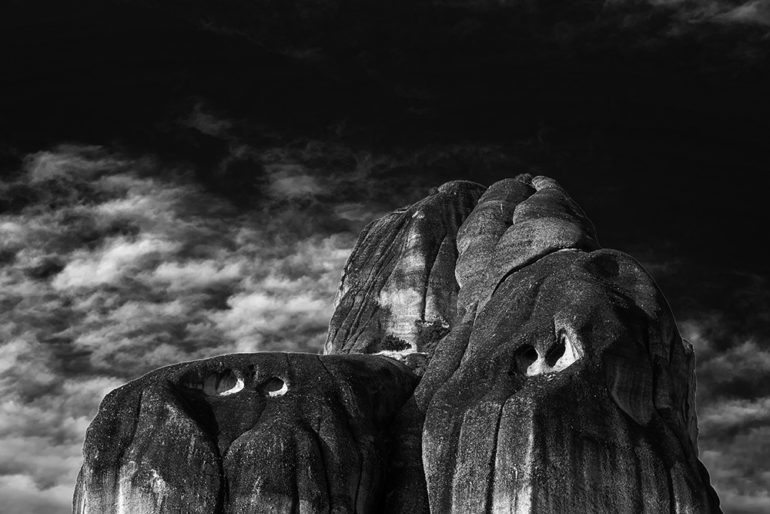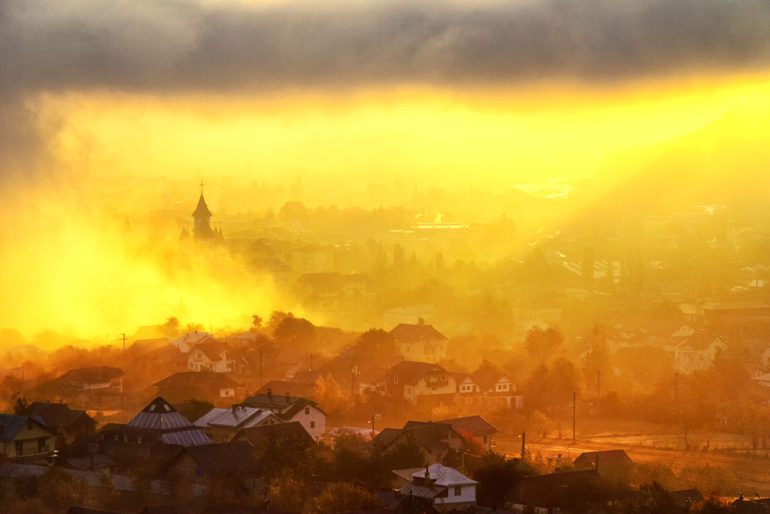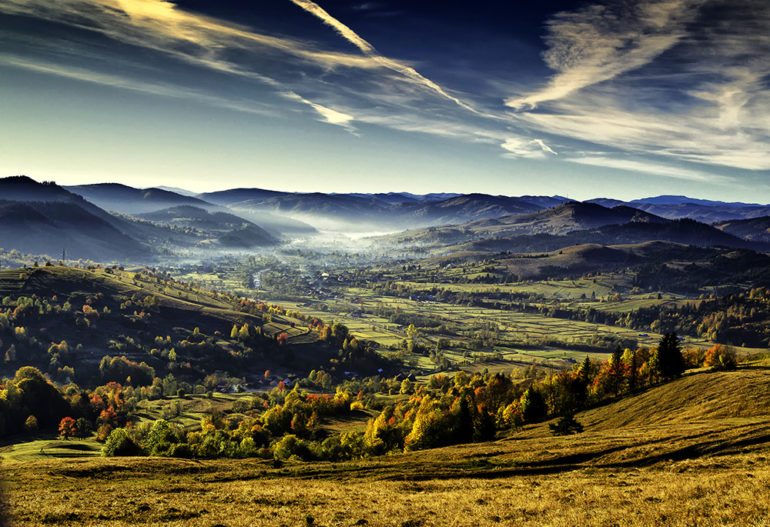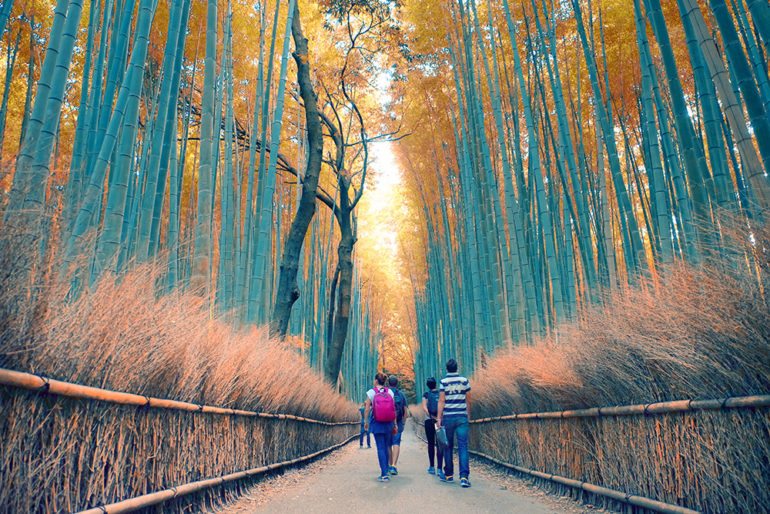All images and guest blog post by Sebastian Boatca. Used with permission
In my opinion, landscape photography is one of the most important categories in Photography. At some point, we all experimented with landscape photography and for a beginner, it is the perfect way to start learning and master the artistic and technical insights of photography.
I love to travel and when you encounter a beautiful landscape, especially when that moment of the day carries some beautiful emotions with it, your biggest desire is to capture that moment and cherish it, save it in your dearest memory collection and share it with the people you care about. This was the beginning of photography, for me. And like every beginning, you deal with difficulties, but the safest way to approach Photography is by starting with Landscapes. You have enough time to think about your composition, to get the camera settings right and your “subject” will not move or get bored, waiting for you to be ready for the shot. Landscape Photography is forgiving, is comfortable, especially for shy people and it is beautiful.
Important Aspects of Landscape Photography
I think the light is a magical concept, generally speaking and in photography, The Light is the essence of it. I love capturing the light in its special flavors. This is why, Golden and Blue Hours are important when shooting landscapes. The moment of the year, the hour, the temperatures, when you have the morning fog and the golden rays of sunlight, those are also relevant aspects for my landscape photography. Of course, when I travel and I do not have the time to wait for the ideal light, I simply compose and shoot my desired frame and try to make the best of it, even if this happens in the harshest light of the day. I may not use that photograph in an art gallery, but I will get home with a precious personal memory.
Composition is also essential: I try to find different angles, although in landscape photography, if you are not using a remote controlled drone, “different angles” is a concept a bit different and more limited, than the one when shooting portraits.
The Difficulties Involved with Landscape Photography
The difficulties in landscape photography usually come from technical inconveniences:
A. You don’t have the proper lens to get the shot, as you composed it in your mind. You need a telephoto lens and your composition requires a lens of at least 200mm in focal length, for example.
Or you want to get a wider perspective for your shot and an ultra-wide lens would be ideal, but you don’t have it and you have to do it anyway, at the widest focal length available.
B. You don’t have the necessary filters, like the graduated neutral density filters, or the neutral gradient filters. The sky, the water areas won’t look as you have imagined them to be. This will make you rethink the framing, to fit your technical limitations, so you take the shot and hope to significantly improve the result in post-processing.
Important Lessons in Landscape Photography
As an autodidact, I have acquired about 95% of my limited experience as a photographer. I am thrilled to learn more, to study about light, composition and some new, simpler and efficient post processing techniques. Some of the most important things that I have learned were about backlight photography, or lens flare. I have felt, as a beginner, that it would be wrong to shoot with the sun in front of me, that lens flare is ruining my composition, telling you about my technical inferiority of my cheap lens. Those things turned out to add charm and originality in my landscape photography. To summarize all this, I can tell you that the easy way is not always the best way. And the more difficult it is to capture the moment (if you know what you are doing with your camera), the greater and more original the result.
Composing a Landscape
I strongly believe in promoting the Beauty, though my photographs. I think there are many beautiful thinks in life and some of them are still unknown to us. We are just not enough people out there to advertise all the beauty that we should know about. This is why, a landscape photographic composition should be a glimpse of nature’s beauty that I could capture, filter through my emotions and share it with the world. Some of us cannot travel like others do and a beautiful album of travel and landscape photographs could be a way to visit those remote beautiful places. I have learned in school about the Aesthetics of the Ugly, but I am not its advocate. I could use an unattractive background in my photograph, only to create a contrast in aesthetics and to emphasize more on the beauty of my subject, in a portrait photograph for example.
The sky gives me the sense of freedom. It is a relevant feeling when I travel and when I look at travel and landscape photographs. The presence of the sky is essential in my landscape photography; it provides balance to the composition. Unless I want to isolate a specific part of the landscape and concentrate the attention on a distinct subject, the sky will always be the mirror of the earth. I do get angry when I have washed out skies in my photographs and the sky area is my first priority in post processing, trying to save it as much as I can.
Landscape Photography Gear
I have switched from a Canon EOS 60D DSLR system to a mirrorless system. There are several advantages, but one major good point is that a mirrorless camera is lighter and smaller. You can take it with you more often, if not every day, while a DSLR can be intimidating through its size and weight. After using the amazing Fujifilm X-Pro1, which is the ideal camera for me in terms of design, size and weight, I changed to Fujifilm X100S for its size and great design and now I use a Fujifilm X-T1.
I think it is extremely easy to lose yourself in the G.A.S. syndrome spell powers and there are some ways to stay away from it. I also think that too much gear is not good, in the sense of creativity. Of course, you would have less technical limitations, when carrying 12 lenses for 3 bodies, but it is simply amazing what you could do with less gear: you force yourself to be more creative, to think more and differently.
I consider that my ideal lens set-up would consist of 2 zooms and 4 primes. Now, I am at the half of it, owning the XF 16-55mm F2.8 R LM WR standard zoom, the XF 35mm F1.4 R and the XF 56mm F1.2 R. Those 2 prime lenses are fantastic. Very fast, compact, metal build, with incredible image quality and a nice aperture ring on each lens. Fuji is well known for its amazing optics which produces sharp and detail-rich images. Since switching to Fujifilm, the need for a Full-Frame camera has gotten really far away from me. Their cameras are very well build, in such an elegant way, which reminds you of Leica and the classic famous 35mm film cameras. “Elegance” is the one word to describe a Fuji experience. And I needed to love my camera and the feeling that it provides me; I don’t want just “an electronic device that captures digital images”, rich in specs, but which does not feel like a camera for photographers. In this matter, Sony and Fuji are the opposite of each other.
I also enjoy using old legacy manual focus lenses on both my old Zenit film camera and also on Fujifilm X-T1 via an M42 mount adapter. I have the wonderful Russian Helios 58mm F2.0 and a German Pentacon MC 135mm F2.8. They are both prone to produce lens flare and really soft images when used at their maxim aperture, but this is where their charm resides.
Post Production and Landscape Photography
Post processing is important, most of the times. Back in the days when using my Canon DSLR, my photos were 75% RAW and 25% JPEG. A landscape photograph made with Canon, without using the RAW format? No way! But things have changed since using the Fujifilm cameras. Now, my photos are 75% JPEG and 25% RAW, because of the richness in details and deep colors that I get from the X-Trans sensor, when using JPEG format and their film simulations. Also, a JPEG file from Fuji supports wider latitudes of post processing, than a JPEG file from Canon. Even if a JPEG file will never have the advantages of a RAW file, I know that in this case, since using Fujifilm cameras, my JPEG files can be significantly improved through post processing. Not to mention that a lot of my Fuji JPEG files are left as straight from the camera. They are simply gorgeous, natural, rich in colors and details and I feel I could only tarnish their beauty, by trying to add, or modify something.
I really am no expert in Photoshop and I would like to add the fact that I prefer to keep the image as close to reality as possible, in terms of its structure. Of course, there are contrast, saturation, sharpness, noise removal, working with levels, RGB curves, lens correction filters and Nik Software filters, but I don’t like altering the reality in what means removing objects, deforming them, adding some objects from different photos or bringing some skies rich in clouds from another photograph and paste them over my dull, original sky.
This is my philosophy and with the passage of time, I feel my style will change, following the “less is more” ideology. I think my desire to show you the beauty of the realities that I will capture with my camera, will be more focused on the inner beauty, the conceptual aspects of reality. This will also affect my composition reasoning and my post production techniques, as I intend to use less post processing operations in the future to come. And that future has already started.
Photographers to Inspire You
I have seen many superb landscape photographs and so many of them were made by photographers that the world has never heard about. But there are some names that come to my mind, great photographers that have both the technical skills and especially the beautiful inspiration. I should call it Talent. Hengki Koentjoro has a beautiful fine art photography style and his black and white photographs are a powerful statement. Joel Tjintjelaar is my source of inspiration and learning, when dealing with amazing long exposure photography in black and white. Trey Ratcliff astounds me with the beauty of his colors and compositions. And at last, but not the least, Daisuke Akita, a friend and a source of inspiration, through his clarity and valuable advices.
My name is Sebastian Boatca, 41, based in Brussels, from Romania, and I live here since 2015, with my wife and daughter.
I am an enthusiast photographer, Fujifilm shooter and an associate committee member of the international photography club “Viewfinders”, from Brussels. My reviews and photos are constantly published in the club’s newsletter. Also, I have published an article for the first issue of the “FujiLove Premium Magazine” and my first article for the “Fuji X Passion Magazine” was already published.
Thomas Menk – Fuji X Photographer and maybe the curator with the largest collection of Fujifilm related articles online also featured me on his website.
I will have a personal exhibition in April 2017 at Art Atrium within the European Commission building, exhibiting 30 landscapes from Romania, France and Greece (EU countries) and now, hopefully with the support of the Japan Embassy in Brussels, I prepare a personal exhibition with a street photography project I have started in Japan, called “People of Japan” (black & white).
I believe I have achieved some interesting things, since I came to Belgium (9 months ago); unfortunately, in my country of origin, none of those things were reachable, not like this, not at this rate. But in Romania, my work were exhibited in 2 collective photography exhibitions, one in Bacau and one in Bucharest at the Village Museum.
My work is mostly landscape, street photography and travel photography, with a fragile commencement into portrait photography. I think my photographs tell interesting stories and talk about beautiful and charming places. I see Beauty as a Value of life that I should promote for my entire life, filtered through my emotional touch.
And this is my journey diary, dedicated to my Japanese experience there, as a travel photographer, still a work in progress.


